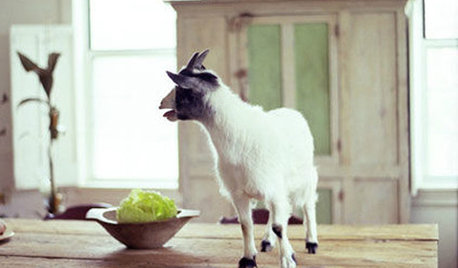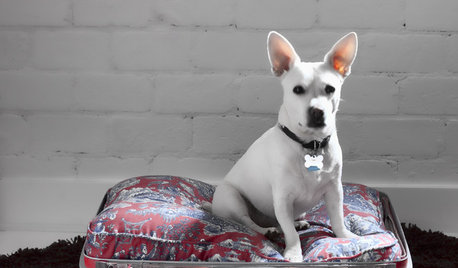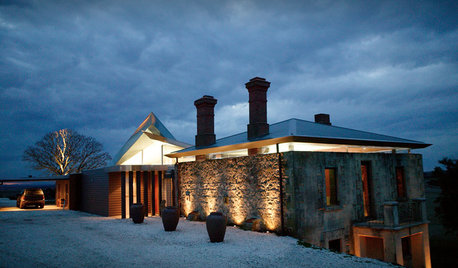Tricky 'homestead dog' question
Esopus
19 years ago
Related Stories

HOUZZ TOURSMy Houzz: Creative Solutions Transform a Tricky Basement Studio
Structural issues and puzzling features give way to beautiful design at the hands of a can-do Montreal homeowner
Full Story
DECORATING GUIDESDesign Solutions for 11 Tricky Spaces
Creative furniture placement, smart storage and sleight of hand turn your home's problem areas into stylish places to enjoy
Full Story
DOORS5 Questions to Ask Before Installing a Barn Door
Find out whether that barn door you love is the right solution for your space
Full Story
REMODELING GUIDESSurvive Your Home Remodel: 11 Must-Ask Questions
Plan ahead to keep minor hassles from turning into major headaches during an extensive renovation
Full Story
LIFEEasy Green: Modern Homesteaders Stake a Claim
With more options for raising chickens, growing edibles and keeping bees than ever, suburban and city folk are rediscovering a lost art
Full Story
CRAFTSDIY Project: Vintage Suitcase Dog Bed
Save Your Own Furniture With a Comfy Dog Bed You Can Make This Weekend
Full Story
KITCHEN DESIGN12 Farmhouse Touches That Bring Homeyness to a Kitchen
Shaker cabinetry, country-store-inspired hardware, barn elements or a key piece of art will add homestead appeal to your kitchen
Full Story
CONTEMPORARY HOMESHouzz Tour: Modern Retreat Emerges From a 19th-Century Ruin
A contemporary country home builds on the remains of an abandoned 1860s homestead
Full Story
LIFEHow to Navigate an Extended Guest Stay
Keep sharing living quarters a positive experience by pondering the answers to these questions in advance
Full Story
KITCHEN DESIGNKitchen of the Week: A Fresh Look for a Georgian Country Kitchen
Whitewash and understatement help turn the kitchen in this period home from a tricky-shaped room into a stylishly unified space
Full StorySponsored
Industry Leading Interior Designers & Decorators in Franklin County






franc
westbrook
Related Professionals
Franconia Landscape Architects & Landscape Designers · South Orange Landscape Architects & Landscape Designers · Newcastle Landscape Architects & Landscape Designers · Camp Verde Landscape Contractors · Cornelius Landscape Contractors · Ellensburg Landscape Contractors · Mequon Landscape Contractors · Painesville Landscape Contractors · Paramount Landscape Contractors · Soddy Daisy Landscape Contractors · Palos Hills Landscape Contractors · Saratoga Springs Siding & Exteriors · Tigard Siding & Exteriors · Waukegan Siding & Exteriors · West Elkridge Siding & Exteriorsangeles13
EsopusOriginal Author
angeles13
lgslgs
EsopusOriginal Author
lgslgs
orcuttnyc
EsopusOriginal Author
Sherr
EvesApple
Dogtrainer
cherrisa
Feather_Inc
coriander
promotional_gmail_com